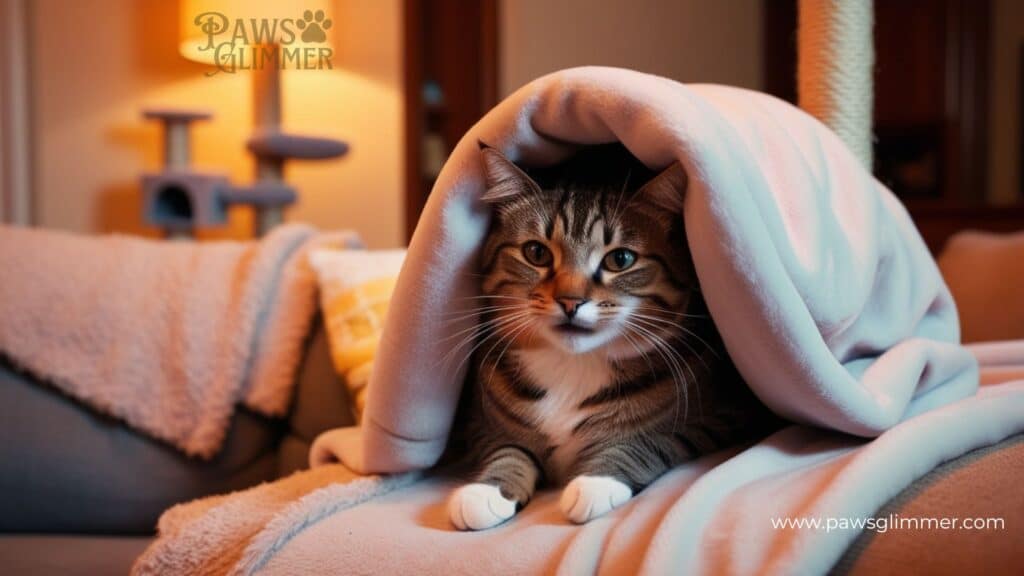Have you ever caught your feline friend in a rather compromising position with your favorite throw? If so, you’re not alone. The sight of cats humping blankets often leaves pet parents scratching their heads and wondering what on earth is going on. In this comprehensive guide, we’ll dive deep into the world of feline behavior, exploring the reasons behind this peculiar habit and offering practical solutions to address it.
When Fluffy Gets Frisky with Fabric: An Introduction
Picture this: You walk into your living room, only to find your beloved cat engaged in what appears to be an intimate moment with your grandmother’s quilt. Before you blush and look away, let’s address the elephant (or should we say, the cat) in the room. Is this normal? The short answer is: often, yes!
Check Out Why Cat Yowl After Eating?
Cat behavior issues like blanket humping, while sometimes disconcerting, are more common than you might think. This peculiar pet habit falls under the umbrella of feline behavior that, while natural to cats, can be perplexing and sometimes concerning to their human companions.
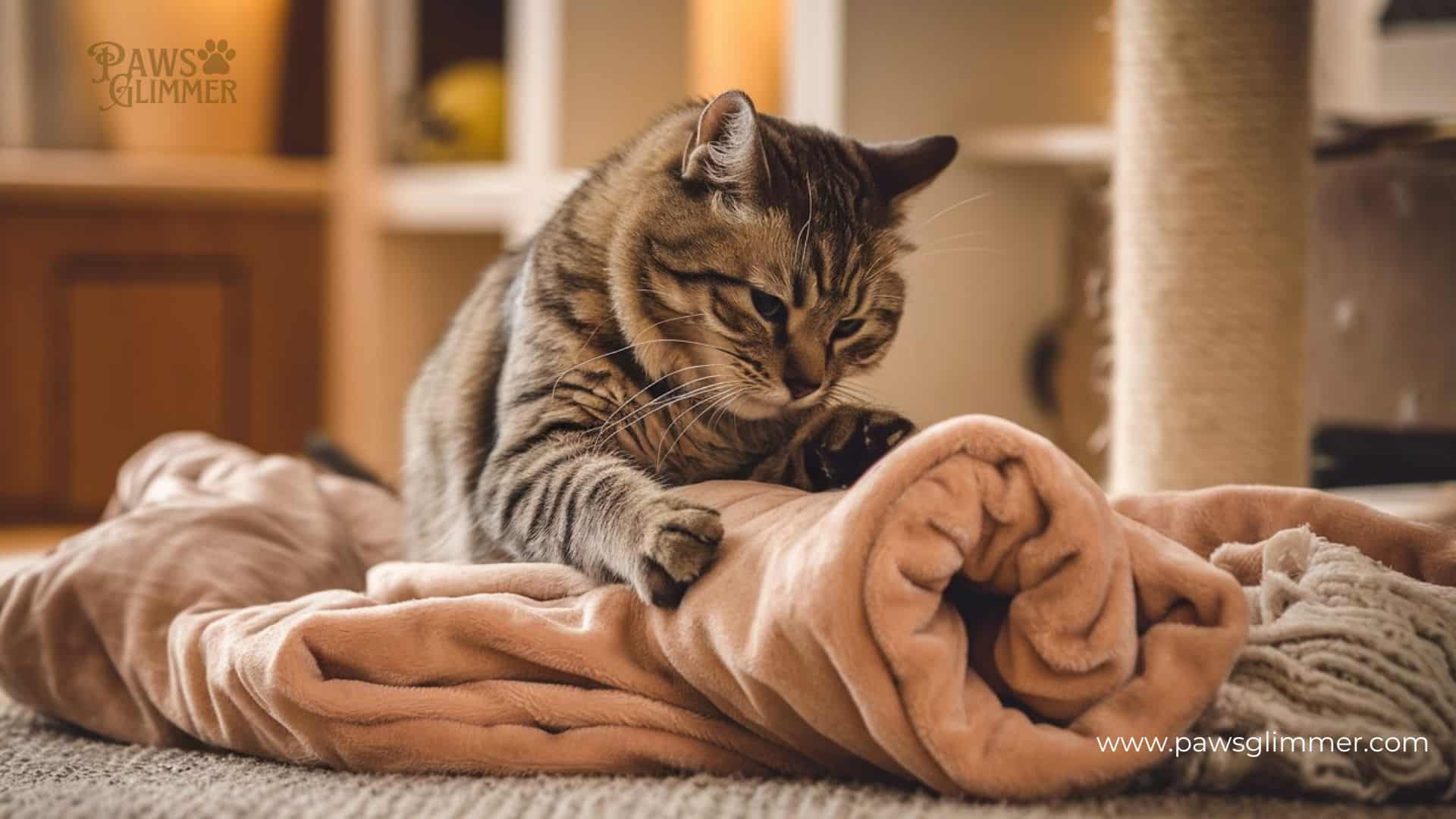
The Feline Fascination: 5 Reasons Behind the Blanket Boogie
Let’s unpack the mystery and explore the main reasons cats hump blankets. Understanding these motives is crucial for addressing and potentially reducing cat humping behavior.
1. Hormonal Hullabaloo: When Biology Takes the Wheel
At the heart of many feline habits lies the powerful influence of hormones. For intact cats (those who haven’t been spayed or neutered), the urge to hump objects like blankets can be directly linked to their reproductive instincts.
Even spayed or neutered cats might exhibit this behavior due to residual hormonal influences. It’s essential to remember that while the surgery significantly reduces these urges, it doesn’t always eliminate them entirely.
“Hormonal imbalances can drive a variety of behaviors in cats, including blanket humping. It’s not just about reproduction; hormones influence mood, stress levels, and general behavior.” – Dr. Felina Wiskers, Feline Behaviorist
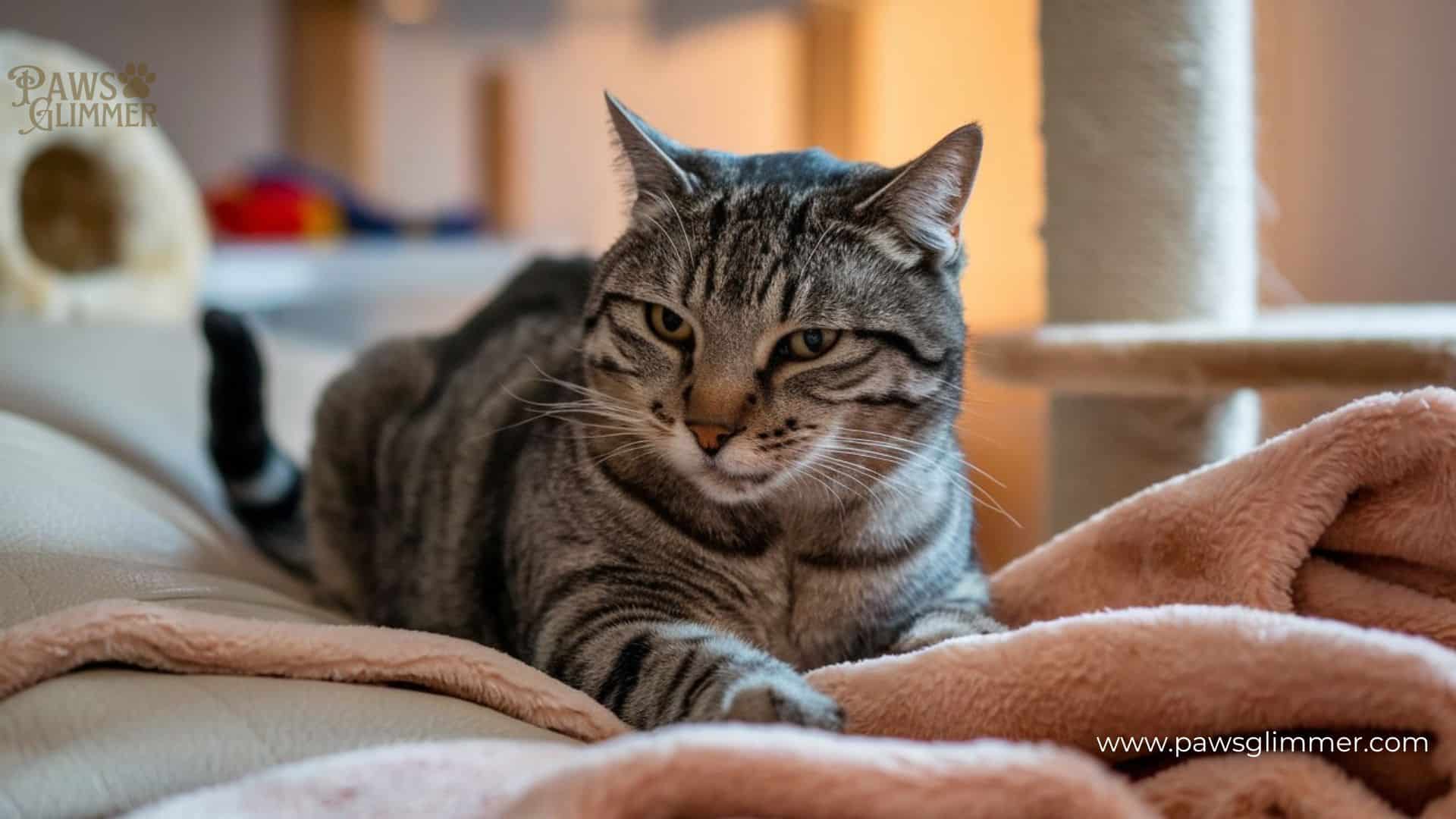
2. Stress Relief: Blankets as Furry Therapists
Just like humans, cats can experience stress and anxiety. In the face of environmental changes or other stressors, some cats turn to comfort-seeking actions like humping soft objects. The repetitive motion and the familiar texture of a blanket can provide a sense of security and relief.
Common Stressors for Cats:
- Moving to a new home
- Introduction of a new pet or family member
- Changes in routine
- Loud noises or construction
- Lack of mental stimulation
The Ultimate Guide to cats Care.
3. Attention-Seeking Antics: Look at Me, Human!
Sometimes, cats engage in unusual behaviors simply to grab your attention. If your cat has learned that humping a blanket gets a reaction out of you (even if it’s negative), they might repeat the behavior to seek attention.
Signs of Attention-Seeking Behavior in Cats:
- Meowing excessively
- Knocking objects off surfaces
- Scratching furniture (especially when you’re watching)
- Following you around constantly
- And yes, humping blankets or other objects
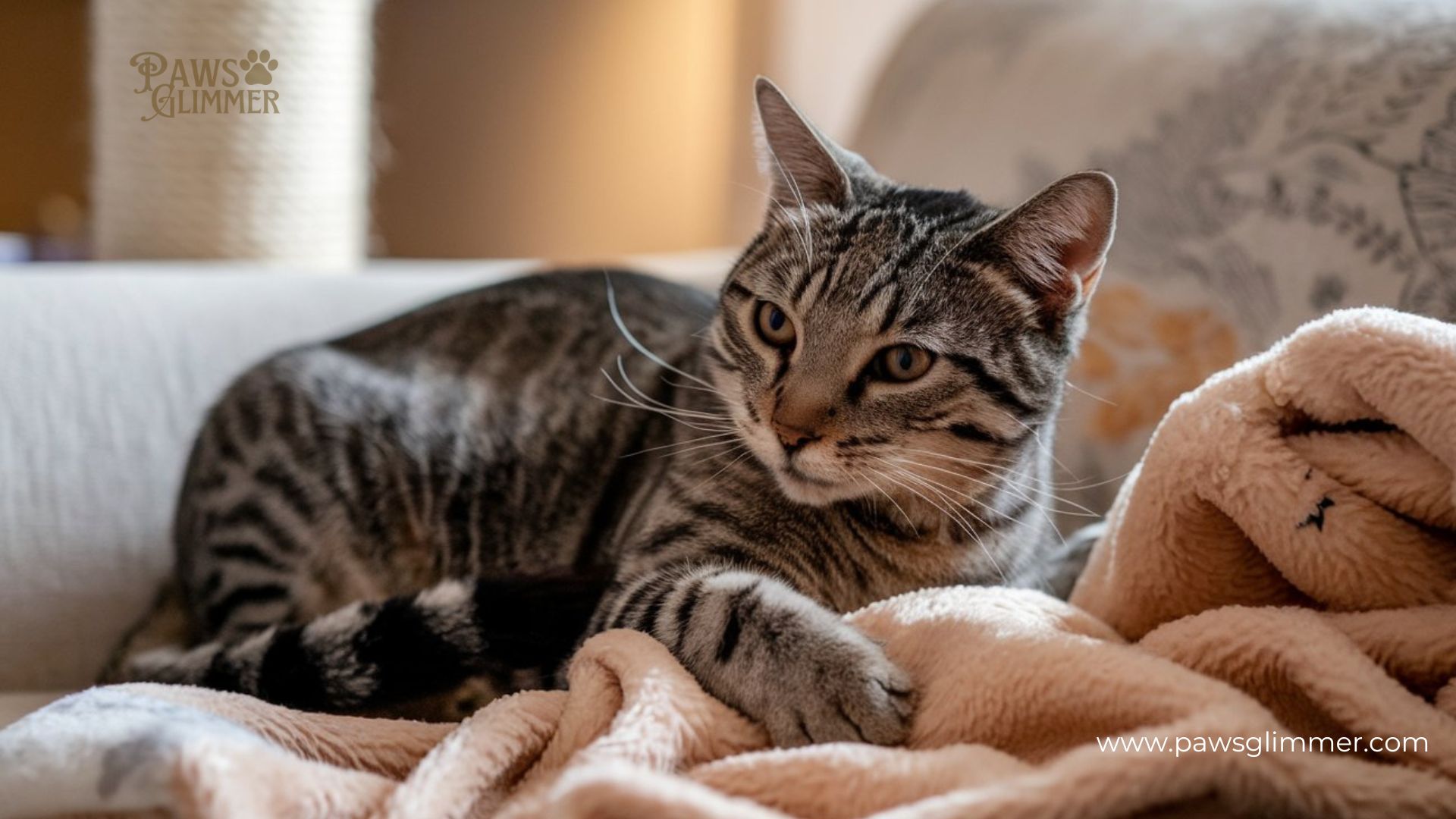
4. Dominance Display: King/Queen of the Blanket Castle
In multi-cat households, blanket humping can sometimes be a display of dominance. Cats use various methods to establish and maintain their social position, and this behavior might be one way of asserting their authority over territory or resources.
| Dominance Behaviors in Cats | Description |
|---|---|
| Blanket Humping | May be used to mark territory with scent |
| Blocking Pathways | Preventing other cats from passing |
| Staring | Direct, prolonged eye contact |
| Raised Tail | Upright tail with a slight curve at the tip |
| Pushing or Mounting | Physical dominance over other cats |
5. Learned Behavior: A Habit That Stuck
Sometimes, cat actions like blanket humping can simply be a learned behavior. If a cat discovered this activity early in life and found it rewarding (perhaps due to the texture or the attention it garnered), they might continue the behavior into adulthood.
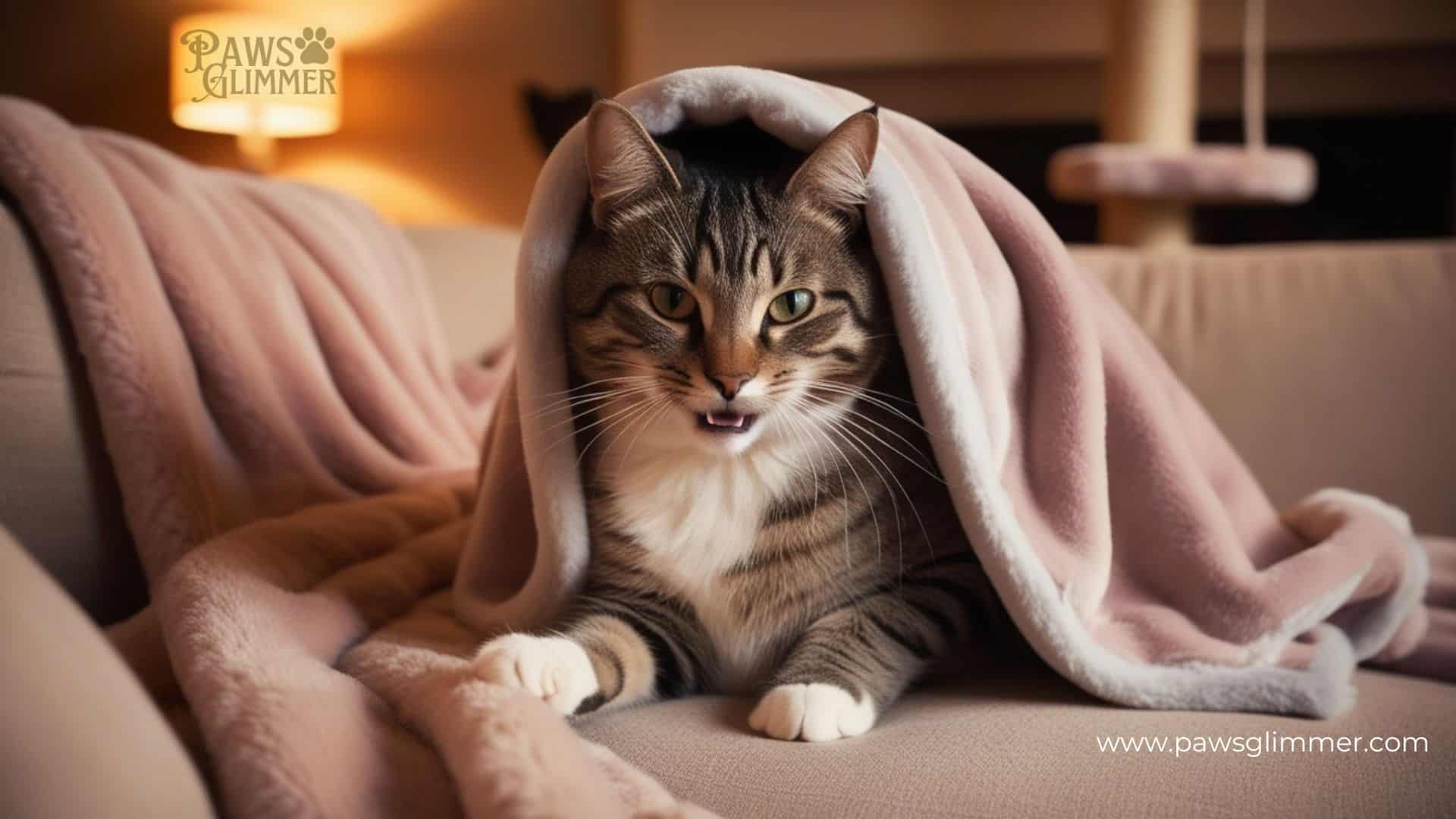
When Should You Be Concerned?
While occasional blanket humping is often harmless, there are situations where it might indicate underlying issues:
- Frequency: If the behavior becomes obsessive or interferes with daily activities, it may be cause for concern.
- Physical Signs: Watch for any signs of discomfort, injury, or irritation in the genital area.
- Behavioral Changes: If blanket humping is accompanied by other significant changes in behavior, appetite, or litter box habits, consult your veterinarian.
Putting the Brakes on Blanket Bumping: Strategies for Success
Now that we understand why cats hump blankets, let’s explore some strategies to reduce cat humping and address these feline habits.
The Snip Solution: Spaying/Neutering and Its Effects
If your cat is intact, consider spaying or neutering. This can significantly reduce hormonal urges and may help decrease humping behavior.
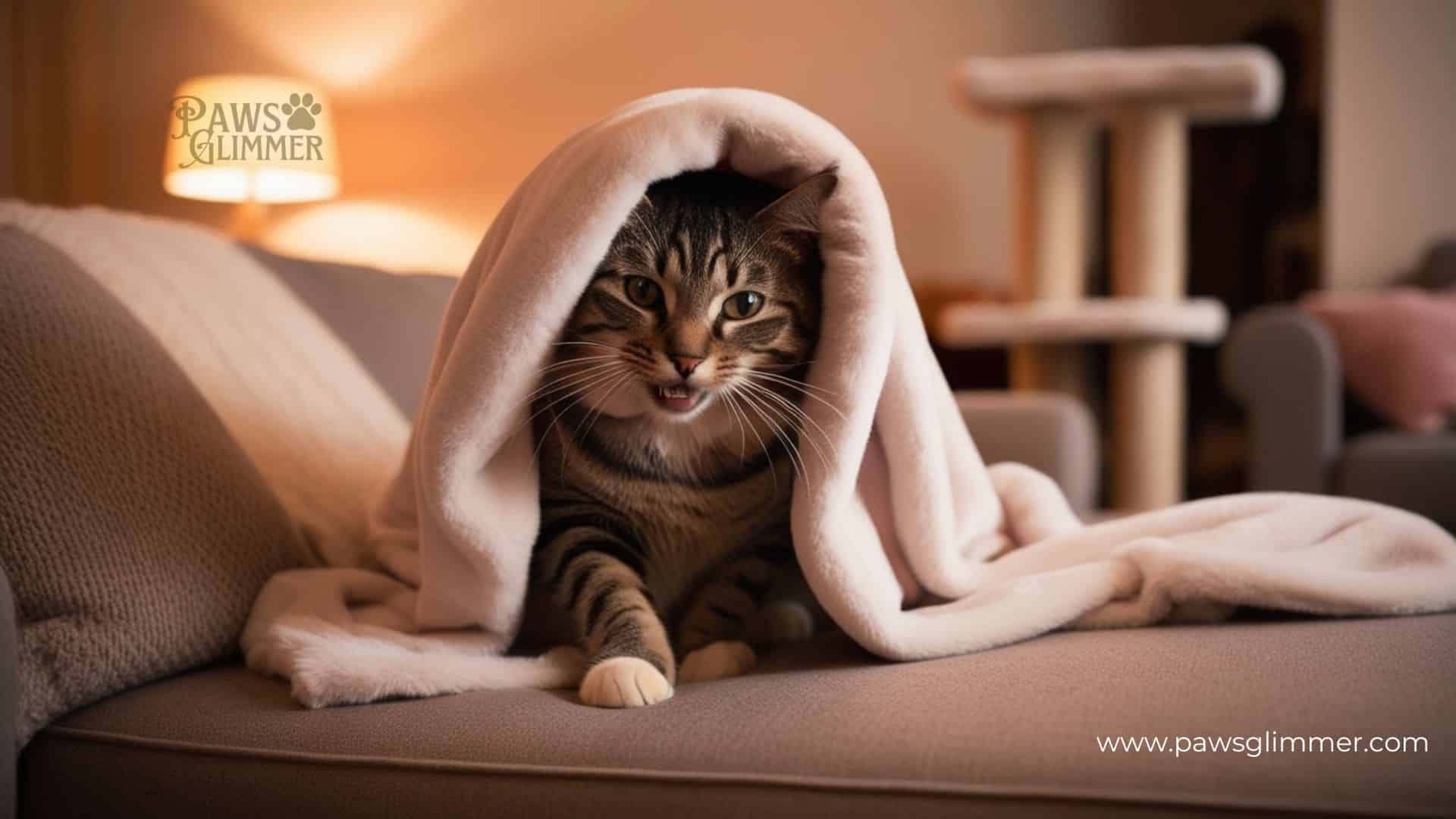
Environmental Enrichment: Keeping Kitty Occupied
A bored cat is more likely to engage in problematic behaviors. Enriching your cat’s environment can help redirect their energy into more appropriate activities.
Ideas for Cat Enrichment:
- Interactive toys (e.g., puzzle feeders, laser pointers)
- Climbing structures and cat trees
- Hiding spots and cozy nooks
- Rotating toys to maintain novelty
- Window perches for bird watching
Positive Redirection: Teaching New Tricks
When you catch your cat in the act, gently redirect their attention to a more appropriate activity. Use positive reinforcement to encourage desired behaviors.
Steps for Positive Redirection:
- Interrupt the behavior calmly
- Offer an alternative activity (e.g., a favorite toy)
- Praise and reward when they engage in the new activity
- Consistently repeat this process
Further Reading onFurther Reading on How To Stop Cat From Licking Wound?
Stress Busters: Creating a Zen Den for Your Cat
Reducing stress can help minimize comfort-seeking behaviors like blanket humping. Create a calm environment for your feline friend.
Tips for a Cat-Friendly Zen Den:
- Use pheromone diffusers to create a calming atmosphere
- Provide quiet, safe spaces for retreat
- Maintain a consistent daily routine
- Minimize loud noises and sudden movements
- Consider calming music designed for cats
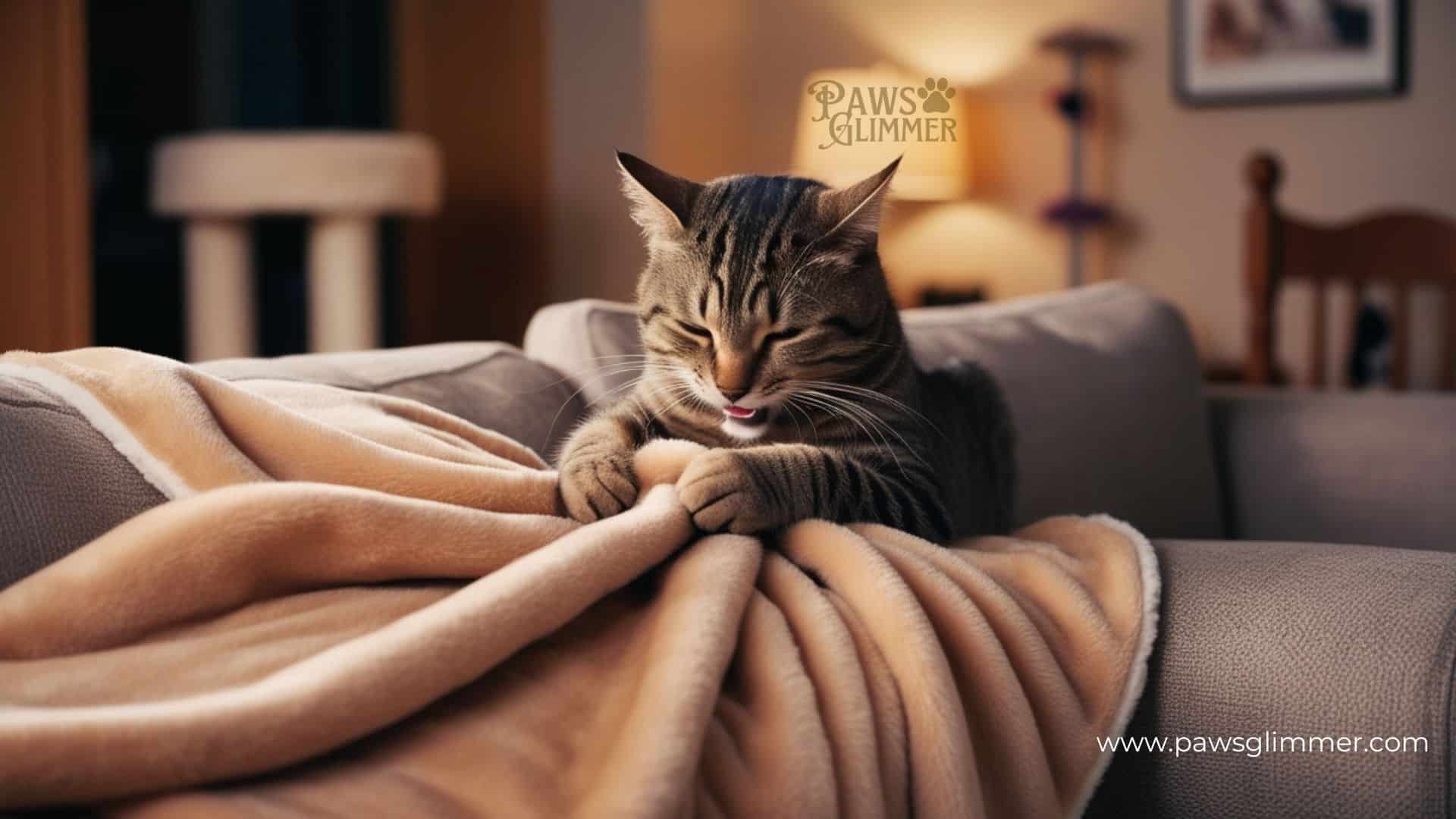
The Veterinary Visit: When Professional Help is Needed
If the behavior persists or you’re concerned about your cat’s health, don’t hesitate to consult a veterinarian. They can rule out any medical causes and offer tailored advice.
FAQs: What Cat Parents Are Dying to Know
Q: Can female cats hump blankets too?
A: Yes, while it’s less common, female cats can also engage in humping behavior.
Q: Is my cat actually… you know… with the blanket?
A: Not necessarily. While the motion might resemble mating behavior, cats often hump objects for non-sexual reasons like stress relief or attention-seeking.
Q: Will my cat outgrow this behavior?
A: It depends on the underlying cause. Some cats may naturally reduce this behavior over time, especially after spaying/neutering, while others may need intervention to change the habit.
Q: Are certain blanket materials more ‘hump-worthy’ to cats?
A: Cats often prefer soft, plush materials. Fleece, wool, and faux fur blankets might be more appealing to some cats.
Case Study: Mittens’ Blanket Obsession
Mittens, a 3-year-old tabby, suddenly developed a habit of humping her owner’s favorite throw pillow. Her owner, Sarah, was concerned and embarrassed, especially when guests were over.
The Problem:
- Frequent humping of a specific pillow
- Behavior increased when Sarah had visitors
- Mittens seemed agitated if the pillow was moved
The Solution:
- Veterinary check-up to rule out medical issues
- Identified the behavior as attention-seeking and stress-related
- Implemented a structured play routine twice daily
- Introduced a calming pheromone diffuser
- Taught guests to engage Mittens with toys when visiting
The Result:
After two months of consistent implementation, Mittens’ pillow humping decreased significantly. She became more engaged with her toys and less fixated on the pillow, especially when visitors were present.
Conclusion: Embracing Your Cat’s Quirks
Understanding the reasons behind why cats hump blankets is the first step in addressing this behavior. Remember, patience is key when working on any behavioral issue with your feline friend. While it might be tempting to scold or punish, positive reinforcement and redirection are far more effective strategies.
By creating an enriching environment, managing stress, and providing plenty of attention and playtime, you can help reduce unwanted behaviors and strengthen your bond with your cat. And sometimes, if the behavior isn’t excessive or problematic, it’s okay to simply accept it as one of your cat’s endearing (if slightly awkward) quirks.
After all, it’s these unique personalities and behaviors that make our feline companions so fascinating and lovable. So the next time you catch your cat in a compromising position with your favorite throw, you’ll be armed with understanding and solutions to address the issue compassionately and effectively.
Additional Resources
For those looking to dive deeper into feline behavior and solutions, consider these resources:
- “The Cat Behavior Answer Book” by Arden Moore
- International Cat Care (icatcare.org) – A wealth of information on feline health and behavior
- The ASPCA’s Virtual Pet Behaviorist tool
- Your local veterinary clinic – Many offer behavioral consultations or can refer you to a feline behaviorist
Remember, every cat is unique, and what works for one may not work for another. Don’t hesitate to seek professional help if you’re struggling to manage your cat’s behavior. With patience, understanding, and the right approach, you and your feline friend can navigate through this curious behavior together.

Raymond Dandan is a seasoned pet blogger with a passion for feline care and behavior. With years of experience and a deep love for cats, Raymond brings expert insights and practical tips to “PawsGlimmer.” His engaging writing and thorough research help cat owners provide the best for their furry friends, making him a trusted voice in the pet community.

